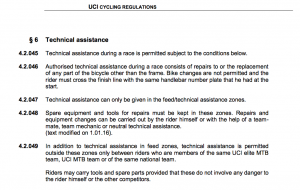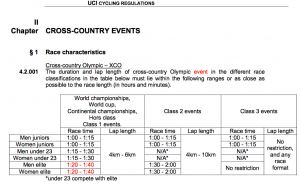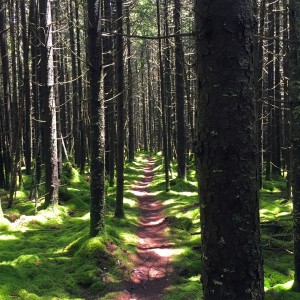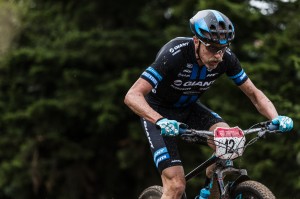It began in 2005.
*This might best be read in the voice of Grandpa Abe from the Simpsons…
It was that year when “pits” or Tech Zones were introduced to International MTB competition. Mountain Biking was a fairly recent addition to the Olympic Games in those days, and the IOC or UCI’s intent was that Olympic success shouldn’t be decided so much by mechanical failures. It was reasoned that with “Outside Assistance” permitted in organized Tech Areas, flat tires and slipping seat binder bolts wouldn’t relegate a medal contender to a mid-pack finish. It was a big shake-up in the traditionally self-reliant world of MTB racing.
And from the beginning, it was a change that didn’t sit well with me. Instead of giving an advantage to riders of well tuned or conservatively built bikes, the impact of a mechanical was now determined largely by luck: if failures happened just prior to the tech zone, they were no problem. If they happened just after the tech zone, your race was over.
The new rule invited racers to push the limits of reliability, fingers crossed that whatever broke would break before the zone, and that the rider’s staff would be able to quickly fix it. It further randomized good fortune. And it favored riders with the resources to keep multiple staff members and thousands of dollars worth of spare parts trailside and ready. Which didn’t seem at all true to the ethos of mountain biking. At least not to me—and I was one of the fortunate riders to have those resources with the Giant Factory Team.
From this rule change, so too, eventually came changes in the bikes themselves. Bikes built to a purpose further and further removed from self-sustained off-road adventure. The most egregious example being the proliferation of tubular MTB tires and wheels at the World Cup level. These fragile tires—that cannot be repaired in the field—are purpose built for short XC races with Technical Support. They are expensive and high maintenance, but are lightweight and ride beautifully. They’re kinda kick-ass, really. But they shouldn’t exist. They are not the problem, but they are a manifestation of one.
The problem is what Outside Assistance has done to XC racing.
The UCI mandates that there are two Tech Zones per lap of an XCO (Olympic Length Cross Country) event. And they recommend that—in the name of expedience—promoters use one “double sided” tech zone. This area must be on level ground and also be easily accessible for mechanics and other staff. Because of this outline, Tech Zones tend to be near the venue’s parking lot at the bottom of the course. A course that is divided into nearly equal length halves—one feeding each side of this zone.
The tracks are already short, to improve spectating and make televising the events less difficult—though US races seldom see coverage or many spectators. Courses must fall between a mandated 4 and 6 kilometers in length. But additionally, the lap must be hourglass shaped to accommodate visiting the same Tech Zone spot twice. So 5km becomes two loops of 2.5km. Which means the furthest reaches of the “Cross Country” event are no more than 1200 meters from the pit, in either direction. And neither a climb, nor a descent is likely to be longer than that measure. Keep in mind that a person can walk about 5k an hour. So the most remote part of a World Cup XC, an XC National Championships, or any other event bound by XCO rules, is about a 15 minute walk from the parking lot. For city folks, let’s call it 12 blocks.
By their nature, trails tend to get better—and more difficult—as you get farther from the trailhead and deeper into the domain of more committed riders. Kept on a 1200m chain to the parking lot, the good stuff will often be out of reach. So, ironically, at many of the race season’s most important events, the amateurs and age-group racers,–unbound by the UCI’s XCO course restrictions–have better courses. And often harder ones as well, as they are allowed to ride longer sections of trail that don’t fit cleanly into the XCO framework.
It’s arguable that the amateurs should get the better tracks though—even if they are a little harder. After all, for the pros and those aspiring to be pros, epic trails, stunning views, and monumental challenges are somewhat secondary to placings, points, press, or potential earnings. A shorter and easier course won’t change the outcome of the Pro race much. And the amateurs will get what they pay for: a more authentic Mountain Bike Experience.
Case in point: This weekend’s National Championships at Snowshoe West Virginia.
The Snowshoe venue is a hallowed one in the history of US MTB racing. More than once, I’ve called it “The Most Technical Track I’ve Ever Raced” based on my NORBA National Championship Series (NCS) experiences there in the early 2000s. The Snowshoe track was simply diabolical. The 40 minute laps took you all the way to Lake Shaver at the bottom of the ski hill—on the most raw and slippery trail imaginable. Roland Green—an XC World Champ at the time—was running down sections of single track while leading. And the climb back to the top, on a bike covered in West Virginian earthen slime, was nearly as hard as the descent. The course used the topography and geology of Snowshoe Mountain to its fullest extent. It went from the top of the hill to the bottom and back again until the length was sufficient to call it a race. Usually two to two and a half hours.
By contrast, this year’s Pro event used the top 1/5th of that mountain. Six laps of a 5000m track designed to get racers to the finish line within the UCI mandated 80-100 minutes. It was run on access roads, wide-cut flow trails, and across the grassy landscaping of the mountain top resort. It featured about 3 minutes (per lap—before the rain) of primarily flat and rooty single track and a challenging—but flat—natural double-track rock garden. The amateurs would enjoy an addendum of two more minutes of proper dank and mossy single track tacked onto the first half of the circuit, but would race fewer laps.
However, everybody raced over the two man-made rock gardens per lap. Rock gardens that were built–with much effort—atop a mountain completely draped in naturally rocky trails.
This somehow gave me the creeps.
Fake rock gardens (the rocks are real, but their placement is contrived) are a construct that I think first gained traction at the Beijing Olympics. Before that, mountain bike trails were usually built to help get a bike over rough terrain—not make smooth terrain rough for mountain biking. After the Beijing Games, London’s track looked even more manicured. Then, Rio shot par for what World Cup and XCO racing had become: races with occasional contrived obstacles and mechanical support twice per lap. Races on short tracks, run for little more than an hour’s time. If this isn’t starting to sound like Cyclocross instead of Cross Country to you, then maybe reading comprehension just isn’t your forte.
But don’t get me wrong here. I do love cyclocross! The dynamic racing and transitory courses of cross might make it my favorite cycling discipline. However, we already have something like cyclocross—you know—Cyclocross. MTB racing should be different—shouldn’t it?
Here is the current definition of XC racing on Wikipedia:
Cross-country – Cross-country (XC) racing is held on a varied terrain circuit, it is normally around 6-8 kilometers (km) and is always a massed-start race. Under the 2006 UCI rules, elite, U23, and Junior Expert riders at UCI sanctioned races, are allowed technical assistance, but only in designated zones and only by an authorized team mechanic. However, riders in the same team can help each other at any point in the race. Under NORBA rules, no technical assistance is allowed. Professional level races are longer in distance, around 50 km.
It apparently hasn’t been updated in 12 years. And things have changed.
Cross Country races used to be held in the Mountains. And often, the remote courses demanded respect. The adventure of even an average MTB race in the 80s and 90s elicited almost laughable survivalism by today’s standards. One racer from that era that I admired (my Dad) carried an emergency blanket and matches at many of those early races. This did seem like overkill—even to my 10 year-old self. But today, many of today’s pro XCO racers aren’t even carrying provisions to repair a flat tire at events.
And I’m one of them.
At the XCO National Championships on Sunday, I weighed my options (figuratively and literally) and decided I’d just hope any mechanicals would come close to my man Sparky in the Tech Zone. Otherwise, my race was probably over anyway, and I’d just have to walk my bike back a short distance to the Team truck.
With the Games as important for the sport as they are, It’s not surprising that Olympic courses are mimicked by organizers of XCO events. But the Olympics are not to blame here. MTB races are a tiny fraction of the action at the Olympics. The Olympic Organizers need a place to race near a major metropolitan area, and they’ll do whatever it takes to make it “more mountain bikey” and a proper test for riders. Contrived bullshit is perfectly okay if you need to bring MTB racing to a place that has no trails. So the Olympics are a proper place for fake rock gardens if ever there was one.
The problem is that Olympic race courses have become the benchmark for XCO events. Other race organizers do not have to imitate this course style. But they do. Why? Because within the UCI XCO framework, it’s easier than the alternative. And today, it’s become fashionable. The manicured look of an Olympic course gives credibility where once it would have caused shame. And unfortunately, what these measures give to a lame race course in a fallow field, they steal from races at proper MTB venues.
The World Cup at Mont St. Anne in Quebec used to be contested on long loops of impossibly raw, difficult terrain. Now it is short, sanitized (for St. Anne) and has man made and cheekily named “features” just like the rest of the XCO World Cup tour stops.
NORBA National races in the US used to be contested at Mt. Snow Vermont and Mammoth Mountain, CA, with big climbs, gnarly descents, and unique and often stunning backdrops. The Pro-XCT series that has supplanted NORBA is often raced in nondescript parks and empty tracts of suburban land. Places chosen for their proximity to infrastructure rather than for the quality of riding experience they offer.
The UCI has removed much of the authenticity of XC MTB racing globally by letting “Olympic Race Standards” become general XC race standards.
So XC racing has been homogenized. A round sport stuffed into a square box. But has it been ruined? Well–not really.
The skies opened in West Virginia this weekend, and a fast 15 minute track became a slimy 18 minute one. Our race took longer than the UCI would have liked. And the best man and woman won Elite National Titles, as they usually do–regardless of course conditions or design. A little further back, I had a very good time re-learning how to let a bike work on slippery terrain, after a long absence from the grease of the East.
More importantly, there were mud-spattered kids everywhere—racing, snacking, smiling—and excitedly talking about their experiences in those hand-made rock gardens. The state of the American MTB Union appeared strong. And most–if not all of the members of said Union–seemed entirely content to see Shavers Lake from afar, and ride only the few thousand meters of trails and roads that were theirs for the weekend.
Cross Country racing used to mean basically one thing: NORBA NCS style racing. But today, riders of the XC sort are spoiled for choice. If this XCO format doesn’t speak to you, there are manifold other racing styles out there that didn’t even exist just a few years ago. Riders that might have just raced NCS events a decade ago are competing in everything from Gravel Grinders to Enduro races today. The Epic Rides Series might be the spiritual successor to the very best NORBA races of the 90s: gorgeous venues, long and challenging back-country tracks, good money, and a palpable buzz in the pits among the stacked pro fields and the legions of age-group competitors.
Race promoters don’t use the term “XC” these days as much as they used to. Many of them keep a buffer between themselves and this hackneyed descriptor. It’s fashionable to hate on XC in general these days–there’s guilt by association with XCO and the oft maligned UCI in the eyes of many racers. But if you’re riding up and down hills in the dirt, that’s exactly what you’re up to. It’s XC riding, regardless of what you want to call it.
Yes, there are choices. And XCO is but one of them. I suppose it’s even a good choice, just different from what came before it.
But personally, I just can’t help but wonder how our MTB landscape would look today–if Outside Assistance were still outside the rules.
Thanks for coming along for the ride.
*Now, get off my lawn, you darned whippersnappers!
Cd







Amen brother
Right on it, sir! In in Virginia, we do it real.XX. 40 milers in the NTional Forest, XXC rather than XC. Enjoyed sharing the same B&B with you at the earlier Snowshoe Nationals, the Morning Glory Inn. Cheers!
Contrived rock garden features. Thanks a a lot Trump. I’m going to Breck where I’ll regret ever signing up for such nonsensical distances. And climbs? Mount Everest is a chump. I’ll each myself a lesson I’ll never forget! Oh, and I’ll see you there Holmes…
Then again, in the 90′s seems like every race was at a damn ski resort and was up, down, repeat. Glad we have so many options now